Submitted by WA Contents
Exclusive: Curators of "The Shift" in conversation with Suha Ozkan
Turkey Architecture News - Jun 29, 2018 - 00:24 10495 views
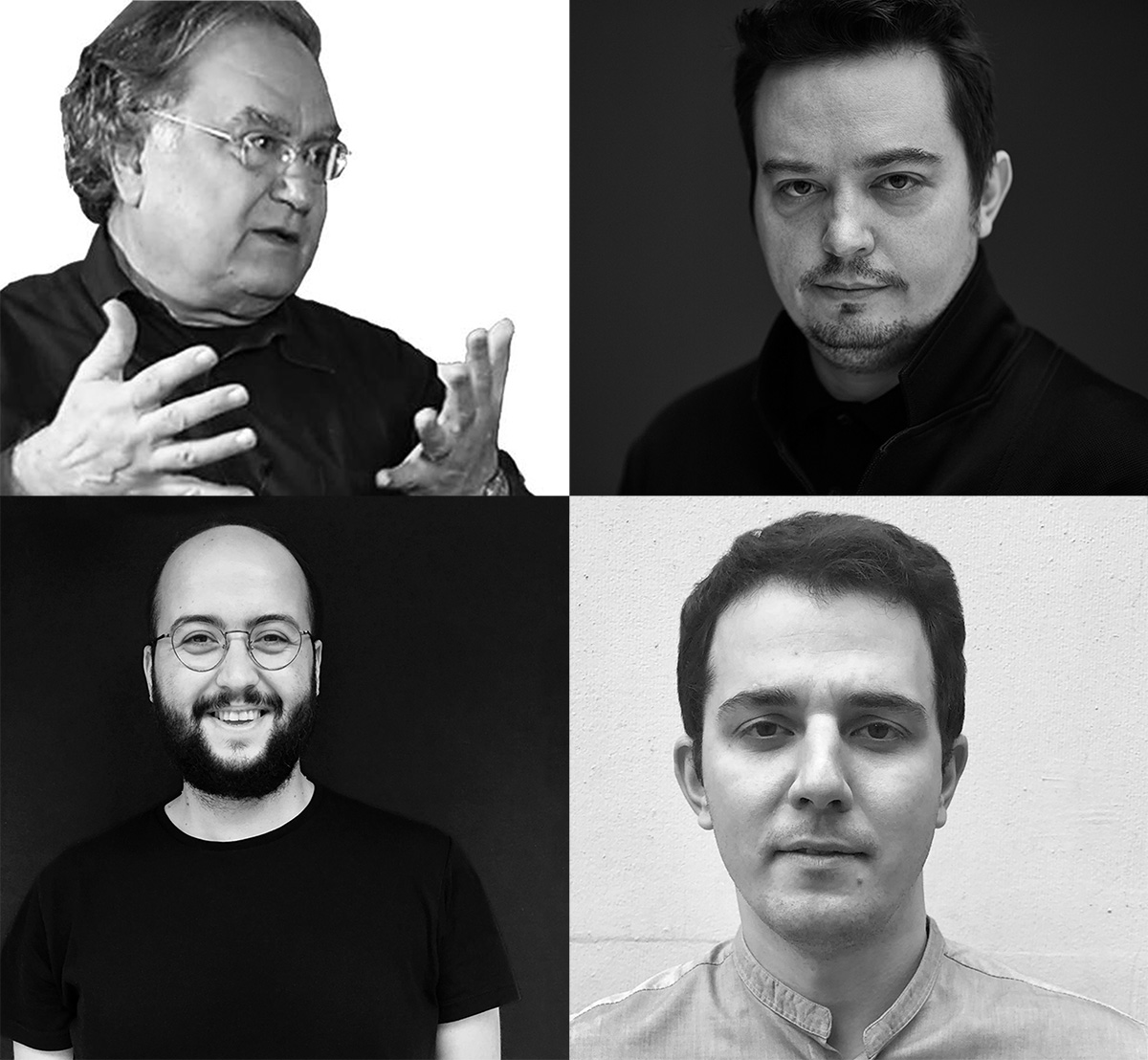
The Pavilion of Turkey presents "The Shift/Vardiya" at this year's Venice Architecture Biennale, the Pavilion, coordinated by Istanbul Foundation for Culture and Arts (IKSV), is curated by Kerem Piker, the founder of Kerem Piker Architecture (KPM), with co-curators Cansu Cürgen, Erdem Tüzün, Nizam Onur Sönmez, Yağız Söylev and Yelta Köm.
In this exclusive interview, the curators of The Shift are in conversation with Prof. Suha Ozkan, Founder and President of World Architecture Community, on the "world architecture", the Biennales, and the participation of the Turkey's Pavilion, as well as his personal experiences. The program of the Pavilion will continue until November and its detailed program can be seen from Vardiya X Press. The Pavilion can be visited at the Sale d'Armi, Arsenale until November 25, 2018.
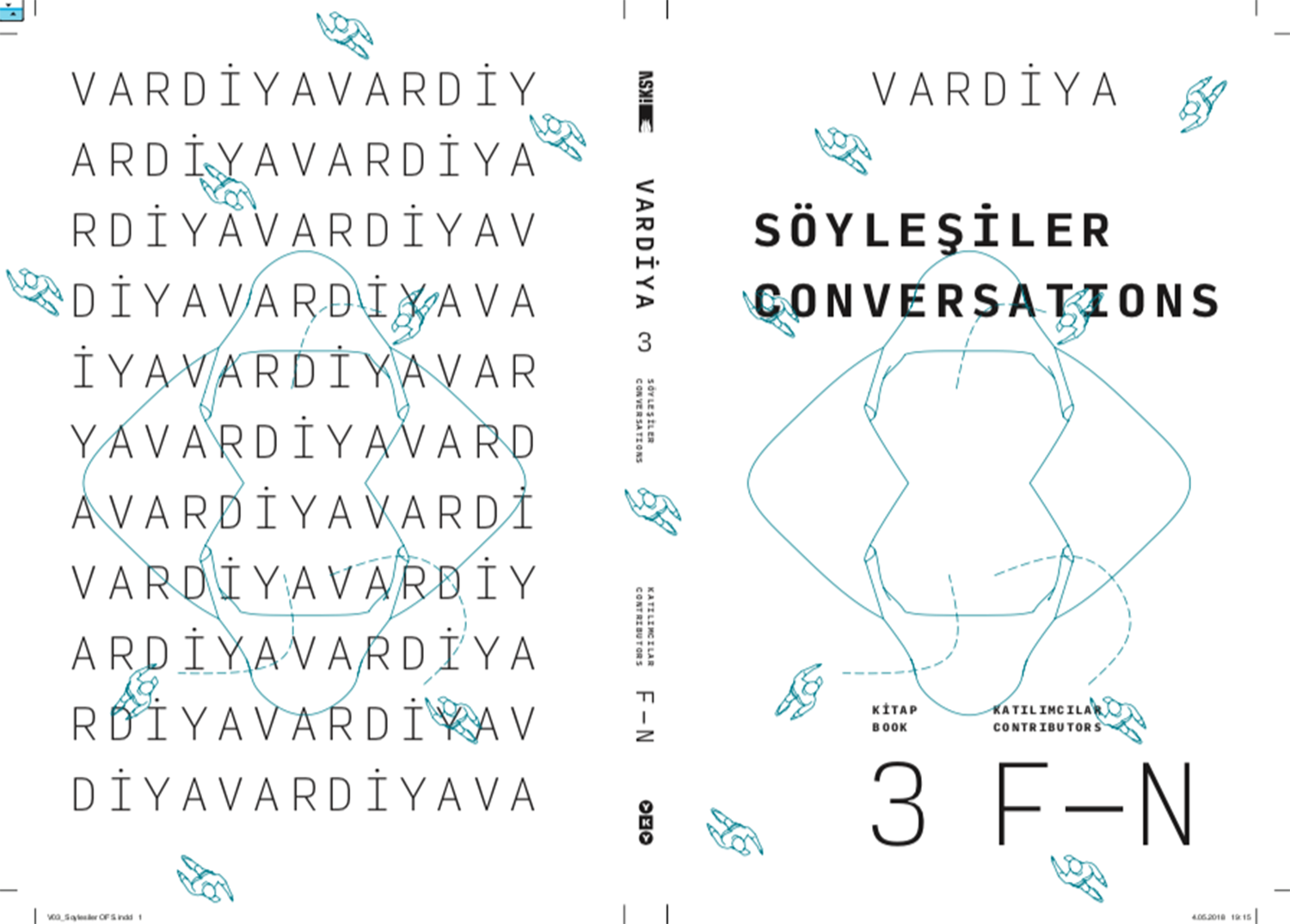
Cover of the 3rd volume, titled "Conversations". Image courtesy of KPM
Conceived in response to the theme of Freespace, the title of the 2018 Venice Architecture Biennale, Vardiya offers a programme of public events with the Pavilion of Turkey, providing an open space for encounter, exhibition and production by welcoming 122 International architecture students from 16 different countries, as well as academics, professionals, keynote speakers and visitors, inviting a diversity of voices to participate in a continuous process of learning and production throughout the twenty five weeks of the Biennale.
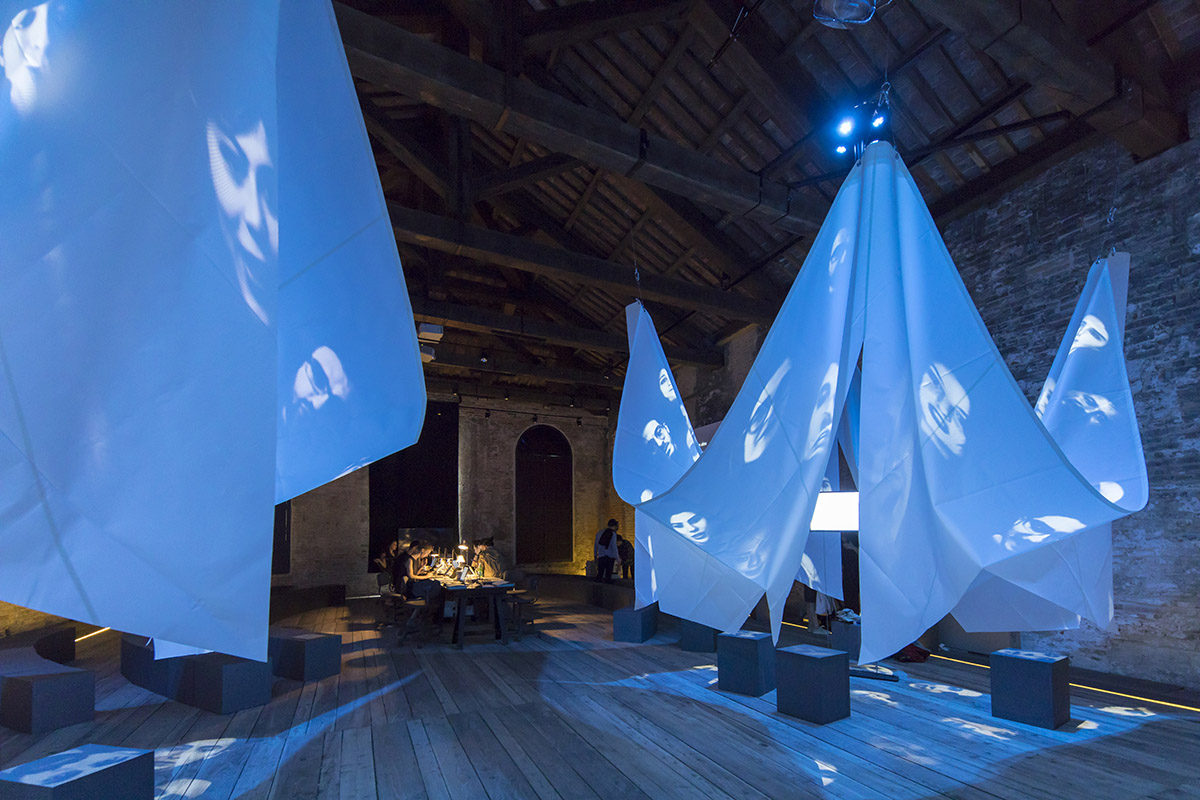
Pavilion of Turkey at Venice Architecture Biennale. Image © Emre Dörter
A set of four books have been published to accompany the project Vardiya, titled "Idea, Open Call, Conversations and Pavilion".The books are edited by Cansu Cürgen, Kerem Piker and Nizam Onur Sönmez and feature texts by the curatorial team,workshop coordinators, and other collaborators. The Vardiya book is distributed by Yapı Kredi Publications in selectedbookstores in a bilingual format – English and Turkish. The book and the exhibition’s visual identity are designed by ONAGÖRE – Okay Karadayılar and Ali Taptık.
In order to share their experiences in Vardiya book, Kerem Piker and associate curators, Cansu Cürgen, Yelta Köm, Nizam Onur Sönmez, Yağız Söylev and Erdem Tüzün documented the whole process from the idea to the project. Vardiya was selected by the Selection Committee for the Pavilion of Turkey among the applications made in response to an open-call, after a series of evaluation meetings. The interviews with all members of the Selection Commitee are available in the 3rd volume, titled ‘Conversations’. And all the interviews were conducted by the curatorial team in March 2018 and they regarded these interviews as an opportunity to talk about why Vardiya exists.
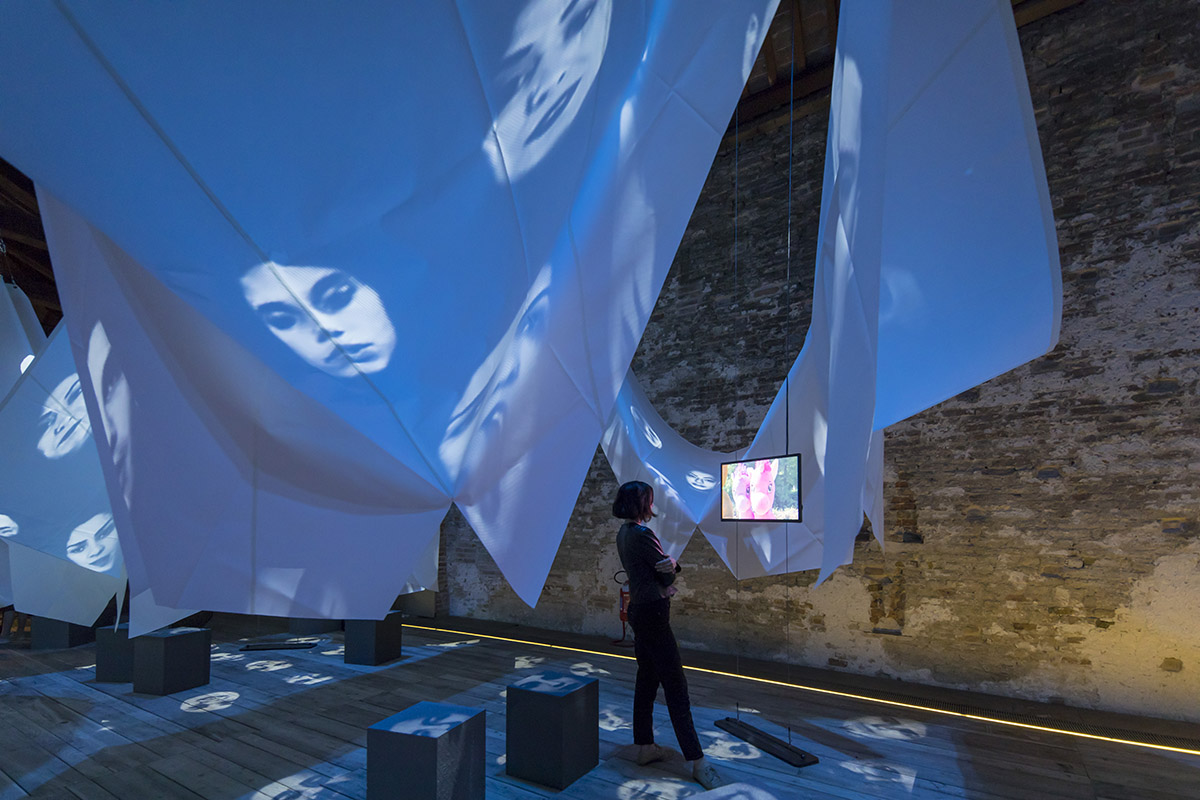
Pavilion of Turkey at Venice Architecture Biennale. Image © Emre Dörter
Kerem Piker, Erdem Tüzün, Yelta Köm in conversation with Suha Ozkan
Read the full transcript of the interview below:
Kerem Piker: For many years, you have assumed important roles and tasks both as the representative of Turkey on various architectural platforms and as a direct protagonist of the international architectural environment. If you would, let us start by talking about the International Architecture Exhibition, La Biennale di Venezia in light of your experiences.
Suha Ozkan: Following the architecture exhibitions directed by Vittorio Gregotti between 1975 and 1978, the inauguration of the architecture section in La Biennale di Venezia was conceived with the theme Presence of the Past, curated by Paolo Portoghesi in 1980. Great were pined hopes on the Postmodern attitude, a contagious architectural quest since the mid- 1970s; and by defining this attitude as Postmodern Classicism, they declared that as the new synthesis of the future, it would unite all practitioners of architecture and attain the level of effectiveness that the International Style had reached in the 1920s.
Along the ‘street’ of the Strada Novissima that he created in the Arsenale, with the influence of Aldo Rossi, Portoghesi had installed large niches for each of the invited architects and thus made room for the key advocates of the Postmodern discourse, namely: Franco Purini, Laura Thermes, Massimo Scolari, Stanley Tigerman, Hans Hollein, Thomas Gordon Smith, Venturi-Rauch & Scott-Brown, Robert A.M. Stern, Ricardo Bofil, and Michael Graves, as well as the ‘Late Modernists’ of thefuture generation. Among these architects were Frank O. Gehry, Oswald Mathias Ungers, Christian de Portzamparc, and Rem Koolhaas. All these contributions helped create an incredible environment that was received with extraordinary acclaim. With this environment of Rossi-Portoghesi, the first biennale generated rich experiences and endless discussions, and asserted its leadership in its field.
On account of his success in 1980, Portoghesi was appointed as director of the following biennale in 1982 too. Thistime the theme was ‘Architecture in Islamic Countries’ (Architettura nei Paesi Islamici). The administrators of the Aga Khan Award for Architecture considered this theme an opportunity not to be missed and appointed me as the director of their participation. I had been in the organization for only a few months when such an important responsibility was placed in my hands. I did not hesitate, because I still felt the excitement of the Strada Novissima exhibition held two years ago.
After the long meetings we had at the top of the Spanish Steps in Rome, Portoghesi said that if we proposed Hassan Fathy, the winner of 1980 Aga Khan Award for Architecture, then he would give us Padiglione Centrale, the central pavilion of the Giardini. My responsibility had increased even more. Here I must mention Attilio Petruccioli and Ludovico Micara, with whom I can say we produced an extraordinary exhibition. Petruccioli, as a researcher renowned for his Fatehpur Sikri documentation, and Micara, due to his architectural work in Iran, were considered to be people of our world. They were both from academia, like me, and were working at La Sapienza. Besides, we were more or less peers. We presented the Hassan Fathy exhibition as a multi-image slide show on transparent surfaces, which was a huge innovation for 1982. The young Milanese Imaggini workshop was experimenting with such work at the time as well. It was impressive; it became the foundation of a long-lasting friendship with both Attilio and Paolo. I must also mention, with gratitude, Giancarlo De Carlo, who gave me guidance and facilitated my adaptation to the Italian environment, which I was very foreign to. While I was rejoicing in this success, the satirical article Architettura Petrodollari (‘Petrodollar Architecture’) published in the prestigiousLa Repubblica newspaper by Bruno Zevi, who was not much fond of Portoghesi, put a damper on my joy. It was for Zevi, who was not only a populist architecture critic but also the most competent architectural theorist of the Italian milieu, to disregard Hassan Fathy. In the general atmosphere of the biennale and as a result of Portoghesi being judged, our contribution also ebbed away. Later it was understood that it was political. Portoghesi did not direct La Biennale di Veneziaagain. Aldo Rossi became the director of the next biennale with the ‘Venice Project’.
I have visited almost all the biennales. My actual participation took place in 2000, with the theme Less Aesthetics More Ethics in Hans Hollein’s Pavilion of Austria. I was a speaker in a meeting whose subject was proclaimed with the title ‘Architecture against Xenophobia’, as a protest against the conservative and racist Jörg Haider’s administration in Austria at the time. For the national exhibition space of Austria, Hollein had selected only works by foreigners who practiced architecture in Austria, which was both impressive and a document attesting to his character as a fearless man of action. It also demonstrated that he maintained his democratic personality, which I had admired back in 1986 when he was in the jury of the Aga Khan Award for Architecture. Hollein had rebelled, with Doruk Pamir against the conservative and reactionary architectural interpretations of the time and placed at the centre of his opposition the principle that‘Democracy is not the law of the majority but the protection of the minority’. As I recall, there were also projects by ZahaHadid, Massimilano Fuksas, and Norman Foster in the Pavilion of Austria at La Biennale di Venezia in 2000.
Finally, since 2014, I have been offering all my knowledge and experience to the service of Turkey’s participation at the International Architecture Exhibition, La Biennale di Venezia, coordinated by İKSV. Vardiya is our third project. I am sure itwill be successful. Another nice development for this year’s biennale is that I have been invited to the Selection Committee that will determine the participation of ‘Young Architects in Latin America’. Our meeting will be held in April 2018. We will see its results together.
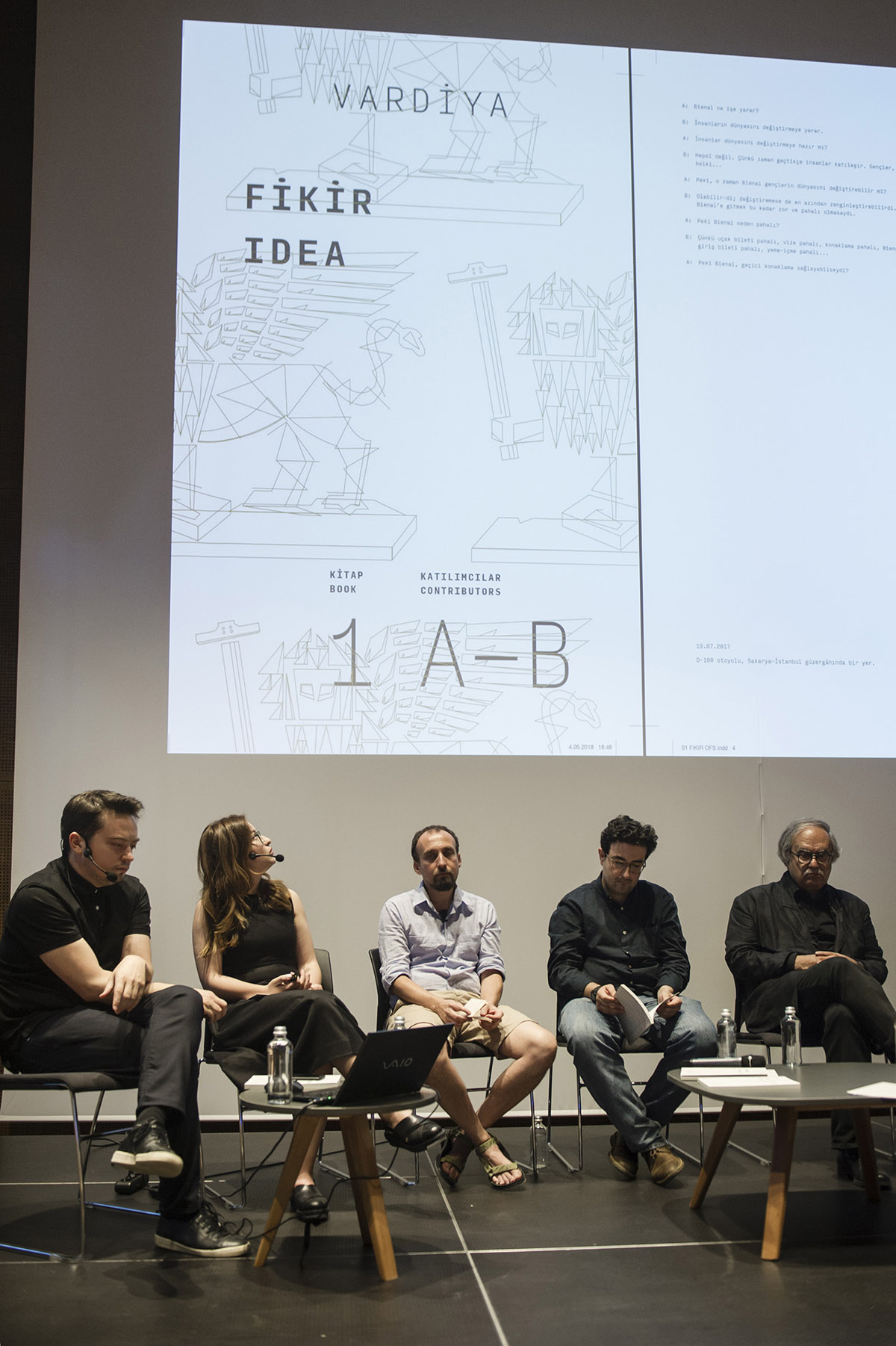
From the meeting of Vardiya book on June 7, 2018 at Yapı Kredi Culture and Art. Image © Ilgın Erarslan Yanmaz, courtesy of IKSV
Yelta Köm: Your personal story—as far as we have gathered by various sources—begins with an insistent encounter in London facilitated by the Architectural Association School of Architecture (AA). We think that encounters have an important place in your career. What sort of opportunities did these encounters create for you?
Suha Ozkan: I went to London and to the AA in order to get to know and to be with the creators of an architectural and urban utopia. Going there was not easy at all, but I made it. In the second half of the 1960s at METU (Middle East Technical University in Ankara), we had a very heightened political awareness. We were aiming for our projects to be socially and technologically consistent with our ideas, and we were constantly, relentlessly in discussion.
The journal Design Quarterly that I found in the METU Library completely changed my attitude to design. Through that journal, I got to know and admire Archigram, Peter Cook, and Ron Herron. From the 1965-66 school year and onwards, all my projects were focused on describing what the architecture of post-industrial society should be; I kept producing projects on these lines. Even though METU was an institution that valued progressive thought, our teachers did not have that competence. For some reason they got uncomfortable and my projects became an object of ridicule. Those juries are still an urban legend even today. Nevertheless, they never hesitated to give me the highest marks based on the assessment that‘design is the consistency between assumptions and product’, which is yet another METU precept.
I was aware that something was brewing in the world at large. My year of graduation was 1967; we were on the brink of‘Paris, 1968’. I wrote to Peter Cook, saying: ‘I admire Archigram. They do not understand me here. Let me come work with you’. And he replied right away: ‘We are a dissident group. I do not have a job, or an office. But if you come to the AA, we will meet.’ This reply fuelled me with enough energy to work and save money for two years. I finally went. I found him looking through a bunch of papers in his hand, sipping his coffee and looking out at Bedford Square. I took out the letter hehad written me and said, ‘Here, I came!’ His reply was very warm: ‘I cannot believe it!’
Kerem Piker: When we look at your professional life, we sense a propensity to always be in the right place at the right time. So much so that this has happened so often that it cannot be explained away as mere coincidence. However, a closer look reveals that this is actually an attitude that has been studied, learned, and worked on. Throughout your career, you put in a lot of effort to create the right meeting-grounds. Perhaps we can continue talking about the existence, importance, construction, and maintenance of the grounds for meeting and encounter in the field of architecture. What would you say?
Suha Ozkan: Everyone has principles that they maintain and never compromise on in order to make their lives meaningful. I have always put my effort on what I wanted to do instead of on what anyone else might think. I come from a rural family which is never out of trouble! The ones who had schooling all became lawyers, and the more polished ones became doctors. I chose architecture and academia, and I liked it. The extraordinary environment of METU has played a big part in this. When I came back to METU from London, I understood that, in order to be effective, one has to be in the university administration. I did not consider administrative duties to be a waste of time, neither did I belittle them. I assumed duties and responsibilities in working groups, boards, the faculty, and, finally, the university administration. And that is how METU Journal of the Faculty of Architecture was born. I have always been in favour of institutionalism, which is necessary for the sustainability and permanence of effort, and have tried to partake in the establishment of many institutions as a driving force. I have given a lot of my time to scientific and operational committees that I found meaningful, but I took care not tofall into ‘mass psychosis’. You won’t see me in any social gathering unless I am being pushed to publicly advocate my ownethical values. And therefore, I have inevitably chosen the environment of ‘quality solitude’. I like it.

From the meeting of Vardiya book on June 7, 2018 at Yapı Kredi Culture and Art. Image © Ilgın Erarslan Yanmaz, courtesy of IKSV
Kerem Piker: The relationship you have established with the world of architecture can be described in terms of two different positions. First is a perspective from the centre; a perspective that makes a sound analysis of the advantages of being at the centre, and helps you establish close relationships with figures there. And second is your close relationship with the architectures that are outside the centre. This second position, which is rendered especially visible in your duties as Secretary General of the Aga Khan Award for Architecture, and your position at the centre, are actually complementary; in fact, if one had existed without the other, I guess we would be talking about an unremarkable professional life operating in a quite limited framework. How did this come about, I mean this network of globalrelationships which was established before the term ‘global world’ was even coined?
Suha Ozkan: Let us call it luck. But in the beginning of my 25-year-long work as an administrator at the Aga Khan Foundation, I advocated that architecture cannot be defined by faith, that belief is meaningful only when it is internalized for centuries and becomes part of the social structure, as a culture. In short, I brought to the agenda the fact that architecture acquires meaning not on the basis of faith, but culture. The steering committees backed me up. Together we advocated that instead of being a dividing definition or excluding attribute, faith is a uniting, shared, and unifying environment of values. By this means, we espoused architecture that determines the quality of life and ascribes duties and responsibilities to it.
We embraced not only the architect, but everyone who takes part in positive initiatives, the worker and the employer who also laboured to this end. We were very effective, and attained the position of determining quality in the sector. The fact that the founder of the award, Karim Aga Khan, is a very modern and learned person has played a big role in this. Of course, the presence of extremely qualified, multi-disciplinary, international persons on the steering boards and juries was an important source of trust. On the other hand, award-management is a very different work; the composition of the jury is very important; finding and appointing these people is a very difficult process, because awarding a project means declaringthe ‘superior quality’ of that project. The respectability of the persons who will make these decisions assures the respectability of the awards. Naturally, the boards and meetings comprise distinguished figures from our world, and this enabled me to establish an affinity with a very wide and international environment and the persons therein.
Most importantly, I never stopped my own academic research; always continued my publications; I always participated in scientific meetings always with my identity as an academician. Therefore, working groups viewed me not merely as an administrator but as a fellow academician. I think the most important factor in the establishment of the relationships that you refer to, is the network of contributors that I have built. From 1982 to 1984, I travelled around the world and created a network of architectural contributors comprised of over a thousand people, from all ages and disciplines. Thus, the environment that the Aga Khan Award for Architecture was established. I always conducted our work in this environment with the warmth of friendship. And, in the environment where I have now retired, these friendships are my most valuable asset.
Erdem Tüzün: In 1998, the Architecture New York (ANY) Conference was organized in Ankara at your initiative. Many architects of international repute, whom one can hardly imagine coming together these days, met in Ankara. Evidently, along with these architects, those from Turkey were also an important part of the conference. Then in 2005, the World Congress of Architecture, which was organized in Istanbul, again offered the architects an environment of meeting on a global scale. What kind of results did all these efforts produce? How do you correlate the context at the time of these meetings, and today? Is it still possible to organize such a meeting today?
Suha Ozkan: ANY, was a know-how group formed by the most competent architects of our age, who were exchanging ideas in anticipation of the new millennium and came together around Peter Eisenman with the backing of Japan. All the competent architects of our time were present in this group that he lovingly called ‘Fat Cats’. They were in the habit of organizing alltheir meetings in Western settings. Eisenman himself has learned that the world is larger than Manhattan and Rome when he was in the jury of the Aga Khan Award for Architecture. We have liked each ever since. I had suggested Jakarta, Almaty or Ankara to host the ANY event. The organisation of ANYtime event in Turkey coincides with a nice and yearned for periodwhen Haluk Pamir and Hasan Barutçu were institutionally strong, visionary and even dreamers. Finally, the event was organized with an extraordinary success. A significant proportion of the people who participated as speakers both in the 1999 ANYtime and UIA 2005 Istanbul Meeting were friends I knew from the AA and the Aga Khan Award for Architecture. We invited 30 ‘popular architects’ to the UIA Meeting, 28 of them came. All the higher committees were saying ‘What for? Having two speakers is enough’. I made them add one dollar to the budget, but it was not spent. All the participation expenses were covered with the contributions I had secured. It was not easy, but it was done. It is still referred to as the most successful congress in the history of UIA.
Their sources of funding were very limited, almost nothing. We did not ask for money from anyone; we identified our requirements; it was all provided. What surprises me is that in such events, institutions forget about their own prestige and always ask for money. I think this attitude is very wrong, it is more appropriate to enable the participation of those who have means and want to give support, and thus make them a contributing factor of the success as well. I carried out the UIA 2005 Istanbul with this rationale. I think if a person or institution wants something very much, they will attain it. The important thing is commitment, persistence, patience, andsincerity, is that not so? Concerning the UIA process, we must mention, with gratitude, especially Şefik Onat and also Fatih Söyler, Sena Altundağ, Barış Onat, Meriç Öner, Ali and Rabia Güreli. For me it is very important to connect the pieces in such major activities; because then many people and institutions can see themselves as a part of that event; and when the event is a success they take more pride in it. Surely it is necessary to define well the whole to be attained and devise the partitioning well also. It is of course easier to organize such events today; Turkey is more open to the international environment and the means and opportunities are wider compared to 10-15 years ago. Above all, institutional etiquette has developed a lot.
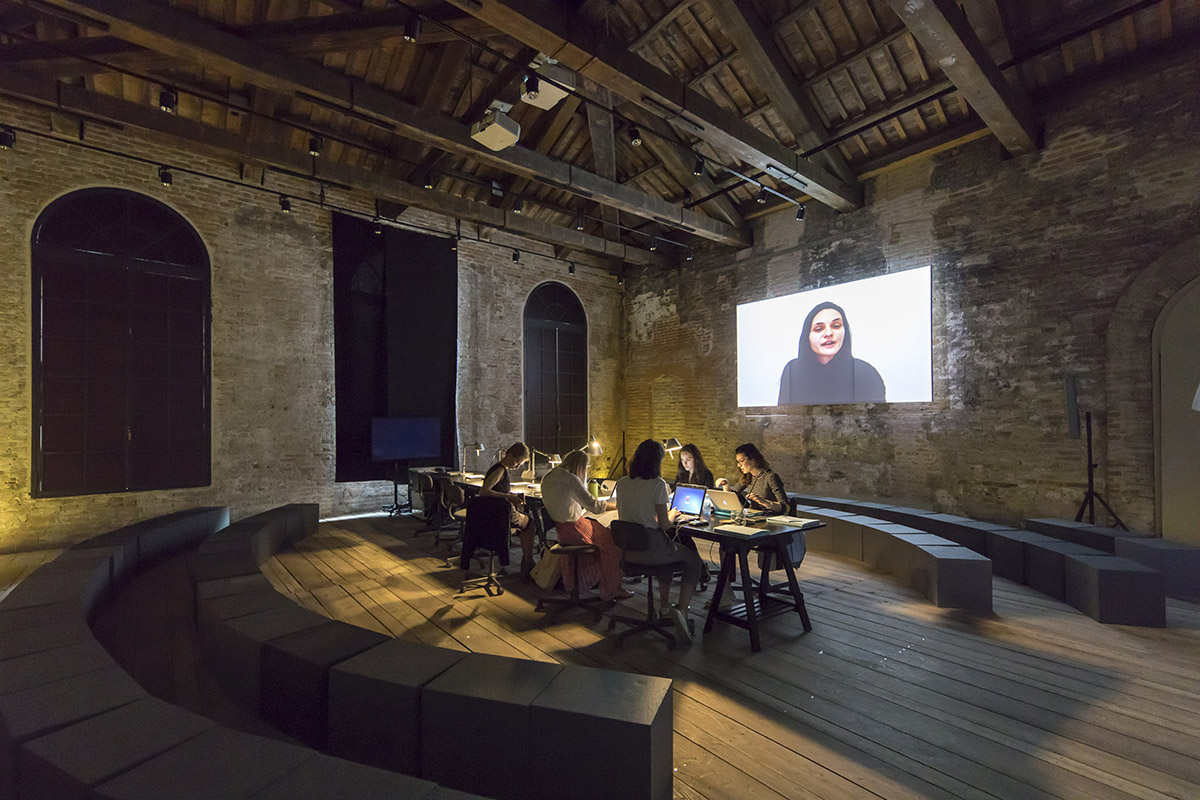
Pavilion of Turkey at Venice Architecture Biennale. Image © Emre Dörter
Yelta Köm: Turkey’s national participation in the Architecture Exhibition, La Biennale di Venezia is a very new phenomenon;we could say we are only just beginning. On the other hand, as in the example of Venice, the subject of national representation is not a new concept. Today, in the specific case of La Biennale di Venezia, what should we expect from a national participation at the Architecture Exhibition?
Suha Ozkan: I think the most important thing is to ‘participate’. Each one of these three participations that I have been involved in, offer different priorities and internalize the transmissions. In the very intense and exhausting tempo of Venice, it is very difficult to be noticed but it is necessary, and the secret to this is to be original, meaningful, and different. And we are doing that. On the other hand, many countries have accustomed, traditional orders of participation. We are still searching. Therefore, it is necessary to be original and interesting, which we are doing. In short, the previous two approaches had two different attitudes. Meanwhile, Vardiya brings into play completely different dynamics. The necessary thing should be to create an adept awareness and put it into practice.
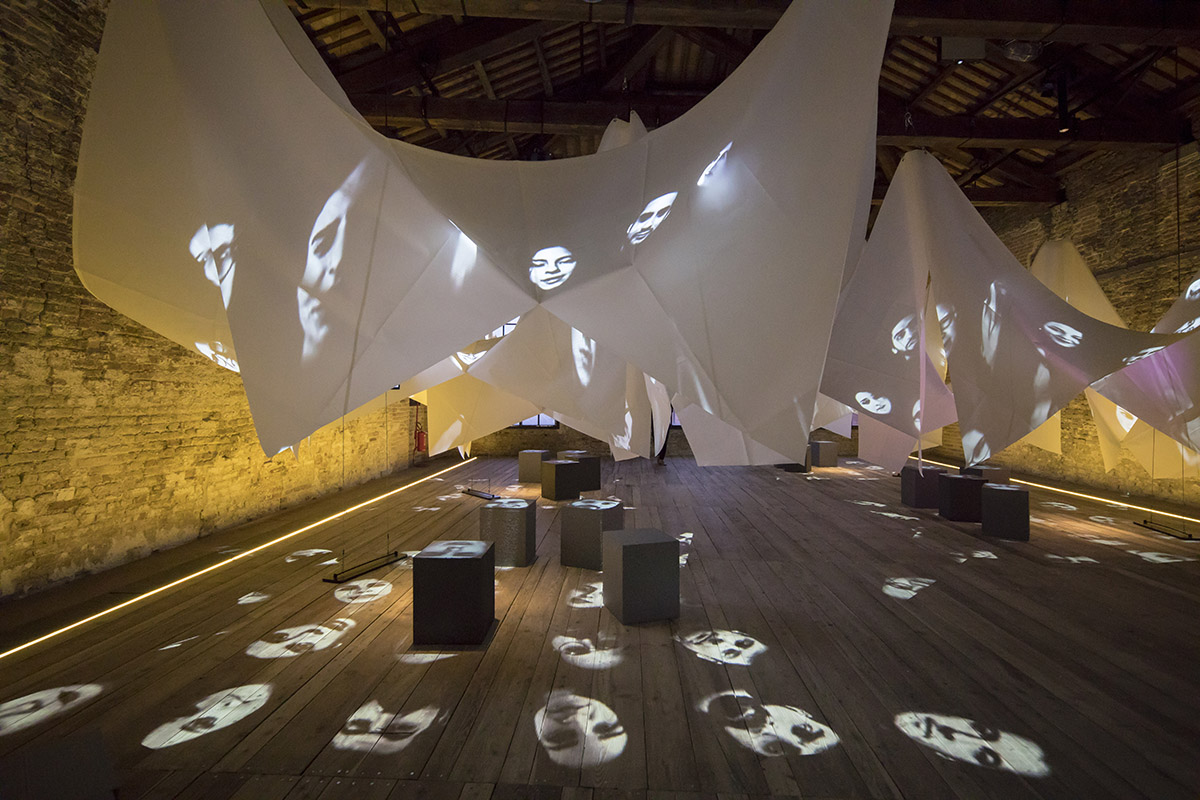
Pavilion of Turkey at Venice Architecture Biennale. Image © Emre Dörter
Kerem Piker: In addition to the formal education within the faculty, METU Faculty of Architecture is one of the first institutions to try to provide education outside the school with applied summer schools. The depth created by these informal education experiences in the lives of the students is undeniable. In Vardiya, we too are seeking to produce an informal learning environment albeit in a different format. When you look at the history of modern architecture, what do you think about the effect of informal experiments on formal practices?
Suha Ozkan: Summer schools at METU, which provide the students with eight weeks of applied practice, have become traditional as an experience of understanding the tools and techniques of building and becoming acquainted and familiar with a part of the society. Vardiya reminds me of the ‘Summer Session’ that Alvin Boyarsky organized in 1970 and 1971, before hebecame the director of the AA. That is another reason why I like and support this idea. It is focused on ‘meeting’; it createsthe opportunity for people to meet with the persons they take as a model, or are curious about, or want to know, or most importantly to meet with their own partners and create their own agendas in that environment. With Michael Sorkin, whom I met at the ‘Summer Session’ in 1971, we had designed the Third London Airport. We are still proud of that project, and the cornerstone of our 40-odd years of friendship and comradeship is that activity, the summer session. Vardiya too will pave the way for hundreds of such relationships; it will be remembered. The preparations of ‘Summer School’ were done with the simplest, most widespread communication tool of the times: postcards. Now the tools are innumerable! But it is the act of ‘meeting’ that is beautiful, because even though technology has created a myriad of new possibilities over the years, there has yet to be a communication medium that can be a substitute for personally being together, and perhaps there never will be one.
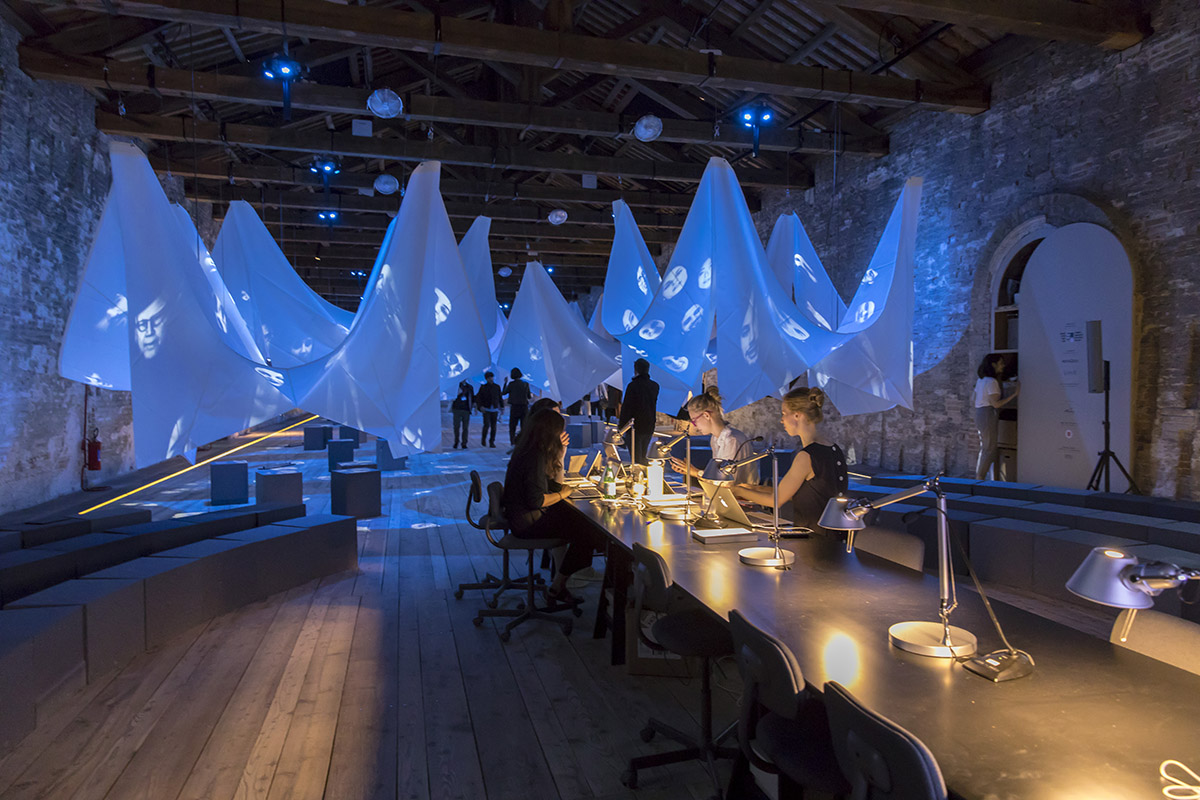
Pavilion of Turkey at Venice Architecture Biennale. Image © Emre Dörter
Kerem Piker: Beyond an exhibition, La Biennale di Venezia actually promises an experience. Undoubtedly, this experience hasdifferent layers. The uniqueness of the city of Venice, the biennale’s power to transform the city, the tools employed by the main exhibition, the juxtaposition of the exhibitions, the exhibitors and the exhibited essentially offer much more than what the exhibition content itself promises. In order to render this experience accessible, we proposed a model with Vardiya; what do you think are the ways to make this model sustainable?
Suha Ozkan: First I should tell you why I like Vardiya despite all the difficulties of its actualization. Vardiya means continuity. The fatigued ones leave, and the vigorous ones come. It is a cyclic relay race until an unknown time. The aim of this race is the sustainability of successive production and the transmission of what has been attained in each phase to the next shift. The fact that this environment will be comprised, especially by young architects and students, is a very smart investment in the future.
The state of being together that Vardiya aims for with international combinations at La Biennale di Venezia, will both be pluralist and will—as a continuous working space—establish a sustainable environment compatible with the working practices of architects.
Kerem Piker: For years you have been involved with numerous activities, exhibitions. Could you tell us what remains for us from the exhibitions? What is it that the architecture exhibition leaves behind? It is also similar to the question we asked for the biennale: what does the architecture exhibition do?
Suha Ozkan: Exhibitions are usually means of publicity and sometimes propaganda. There has been an accumulation, an environment has been generated; and exhibitions aim to present this accumulation with its social and spatial aspects. And in high level and tense environments like La Biennale di Venezia, every exhibition has to be a manifesto. The institutions that accept the exhibition and have it executed—in this case La Biennale and İKSV—aim to impress the professional public.
High-profile environments like La Biennale di Venezia make the entire public accept the quality of the participation on the one hand, and on the other automatically increase the expectation, and in order to safeguard their own credibility, expect top-notch presentations. This manifests as a phenomenon that, in and of itself, triggers intense efforts and creativity. This situation applies to permanent and cyclic environments like the biennales. Because every biennale activity delineates the quality level for the next one. Meanwhile, the permanence of the exhibitions is determined primarily by the interesting and formative ones. Presence of the Past (1980) and Hans Hollein’s Architecture against Xenophobia (2000) exhibitions that Imentioned earlier are only two of the important reference points. Especially, the fact that Charles Jencks’s text written forthe 1980 biennale has been revisited after 22 years by the Domus journal attests to the history that was made there.
(-end of transcript)
This conversation has been retrieved from its original edition of the book, available in: Cürgen, C., Piker, K., & Sönmez, N.S. (Eds.).(2018). Vardiya: Conversations. Istanbul, Yapı Kredi Publishing.
Kerem Piker, the curator of the Pavilion of Turkey at 16th International Architecture Exhibition, Venice Architecture Biennale; Erdem Tüzün and Yelta Köm are two of the associate curators of Vardiya. Suha Özkan, Professor of architecture, lives in Bodrum. Özkan was teaching and taking part in administrative roles in the Faculty of Architecture at Middle East Technical University, Ankara and worldwide. He undertook many international duties including the Secretary General of the Aga Khan Award for Architecture.
Top image: From left to right: Suha Ozkan, Kerem Piker, Yelta Köm, Erden Tüzün, courtesy of IKSV.
